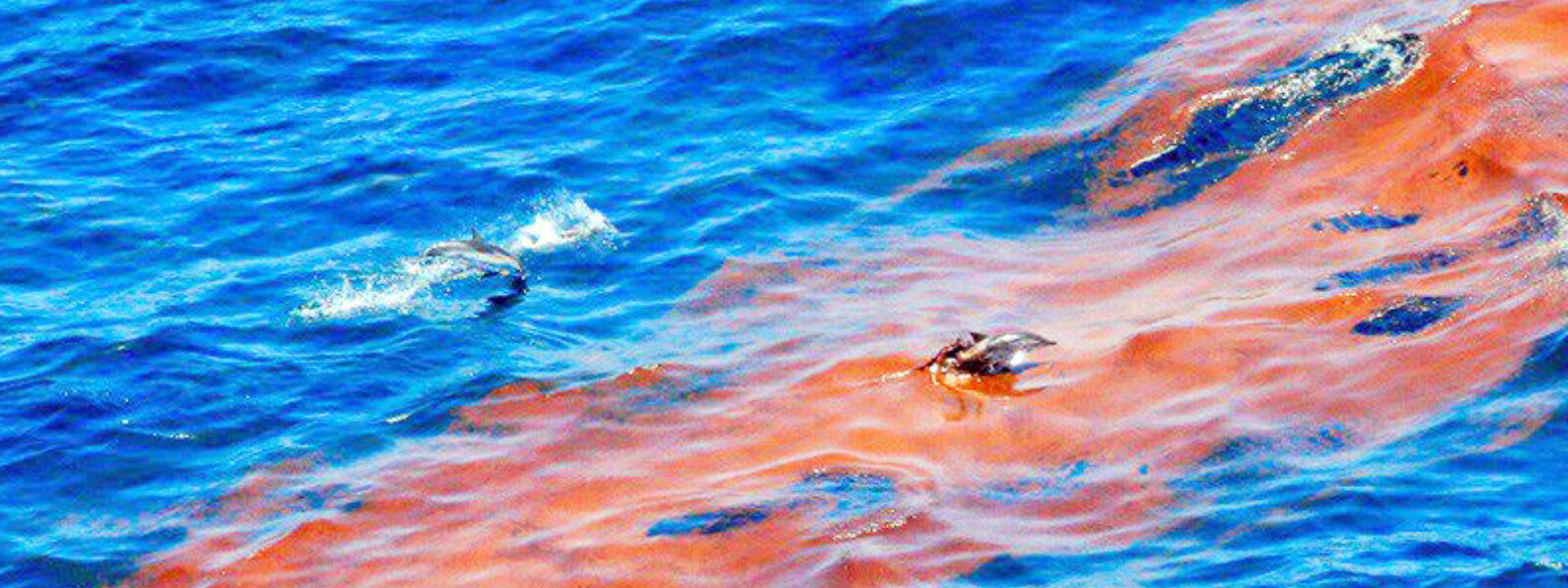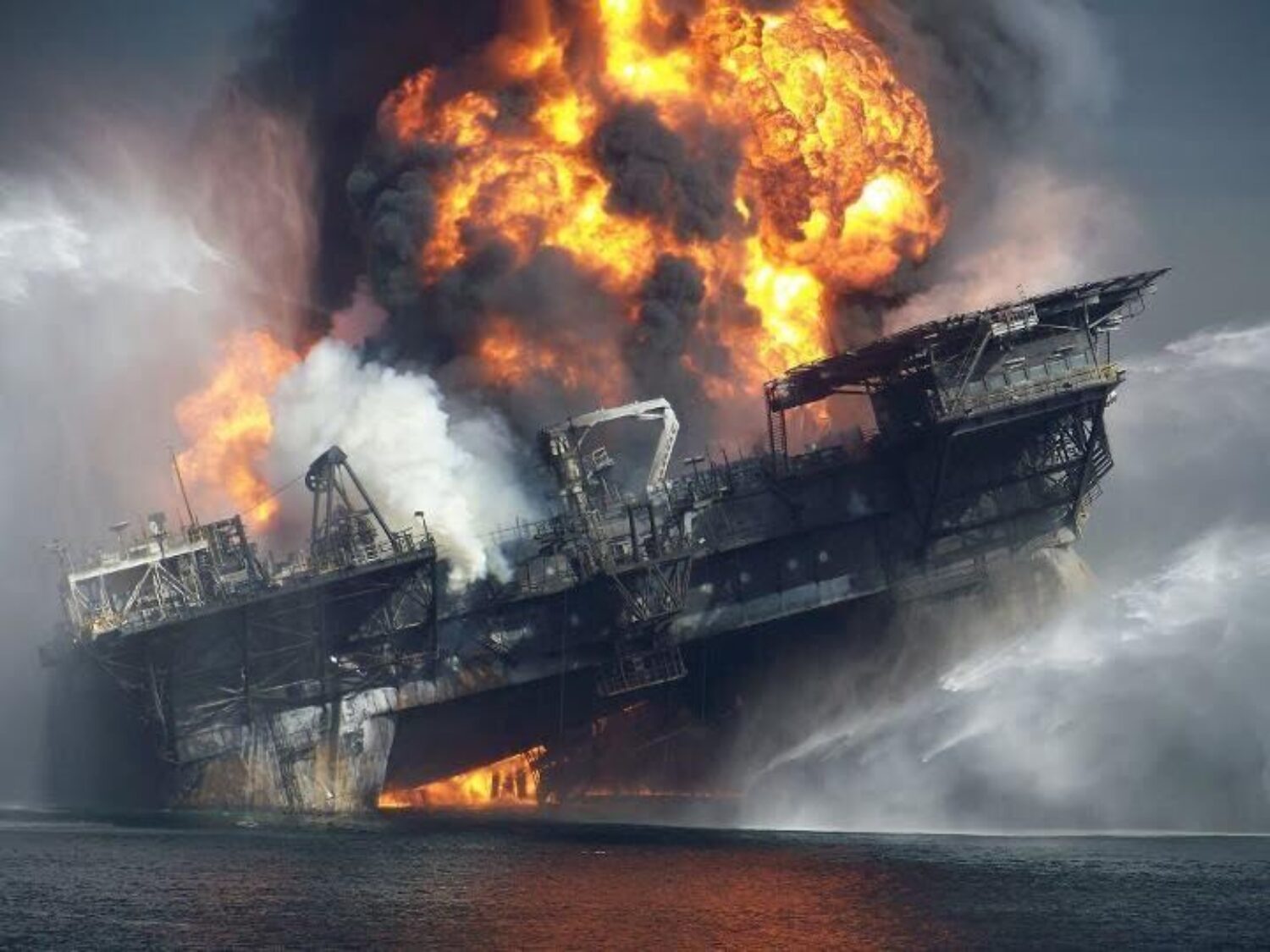
President Biden Approves More Oil Drilling on Federal Lands
By Mark J. Palmer
Yesterday, April 20th, was the 12th anniversary of the terrible offshore oil explosion and massive oil spill in the Gulf of Mexico. In the worst oil spill in history, the Deep Water Horizon oil platform, owned by Transocean and leased to oil giant BP, was destroyed and sank, leading to several months of oil pouring into the Gulf of Mexico, killing marine life and harming local coastal businesses. Eleven oil workers were killed and 17 injured.
During response activities and surveys, workers observed more than 1,400 marine mammals in the surface slick. All 21 species of cetaceans found in the Gulf were exposed to oil through subsurface, surface, and air contamination. These cetaceans were exposed to oil when they inhaled contaminated air; aspirated liquid oil; ingested contaminated sediment, water or prey; or swam in contaminated waters. Lung impacts were the most obvious adverse health effect but impaired stress response and compromised immune function were also noted.
The Natural Resource Damage Assessment found that at least 22 stocks (representing at least 15 species) of dolphins and whales overlap with the oil spill footprint. They had demonstrable, quantifiable injuries. Bay, sound, and estuarine bottlenose dolphin stocks, coastal and shelf dolphin stocks, and oceanic whale and dolphin stocks were all injured. Injuries included increased mortality, increased reproductive failure, and adverse health effects. The Barataria Bay and Mississippi Sound common bottlenose dolphins were two of the most severely injured stocks.
…A total of 1,141 dolphins died from March 2010 through July 2014… For these species, the number of years to recovery without active restoration ranged from 10 to 105 years.
Yet, this April 15th, the US Bureau of Land Management announced the issuing of new oil drilling permits on public lands. So far, the Biden Administration appears to be holding off on new offshore oil leasing.
It was not long ago, at the beginning of his Presidency, that Biden halted issuance of new permits for drilling on public land and in the ocean. Despite the pause, the Biden administration approved more drilling permits in 2021 than President Trump did in the first year of his presidency, according to the Center for Biological Diversity.

The explosion of the Deep Water Horizon oil platform spewed oil over thousands of miles of the Gulf of Mexico, killing whales, dolphins, sea turtles and fish. The effects are still being felt today, twelve years after the disaster.
The Administration claims they must go forward with leasing in line with the loss of a lower court lawsuit, but experts believe the Administration has ways to get around the court decision.
On the positive side, the Biden Administration this week restored provisions of the National Environmental Policy Act that had been rescinded by the previous administration, including the requirement that climate change impacts be considered in reviewing federal projects.
The oil and gas industry continues raking in record profits while communities pay the price. The watchdog organization Accountable.US reported in February that Shell, Chevron, BP and Exxon made more than $75.5 billion in profits in 2021, some of their highest profits in the past decade.
Not only dolphins and whales, but our ocean and land environment are paying the price.
Several analyses, including the most recent report by the United Nations Intergovernmental Panel on Climate Change, conclude that if the world’s existing fossil fuel production, not counting new leases, is fully developed, it would push warming past 1.5 degrees Celsius. Avoiding such a dangerous temperature rise requires an end to new investments in fossil fuel projects and a rapid transition to non-warming fuel alternatives.
The Natural Resources Defense Council established that: “…the industry is likely sitting on up to a 10-year cushion of unused leases and drilling permits.” NRDC notes that only about 20% of existing offshore oil leases have been drilled. It takes up to ten years for an oil well to be developed to the point where oil becomes available to consumers, so new leasing will have little impact on current gas prices.
Many organizations are pushing back:
“As the Interior Department announces that it plans on continuing oil and gas leasing on federal land, Sovereign Iñupiat for a Living Arctic condemns any further extraction, especially within the Arctic,” said Siqiniq Maupin, executive director of Sovereign Iñupiat for a Living Arctic. “Our lands are warming at a higher rate than anywhere else in the world, causing detrimental impact to the fragile ecosystems that call it home and directly impacting the rest of the world, as well. With conservative climate models predicting that we have less than 30 years to radically change our relationship with oil and gas, the future rests in the United States’ hands. We can no longer commodify our land and water, especially at the rate climate change is occurring. We are nature fighting back.”
The International Marine Mammal Project of Earth Island Institute is strongly opposed to continued leasing of fragile public lands and the ocean for oil drilling. Existing leases that have not been explored or drilled by oil companies are too numerous to list.
We must move the US and world economies to fossil-free energy sources, such as wind and solar. Only then can ocean and terrestrial life stand a chance to survive the climate crisis. We cannot drill ourselves out of our energy dilemma.
